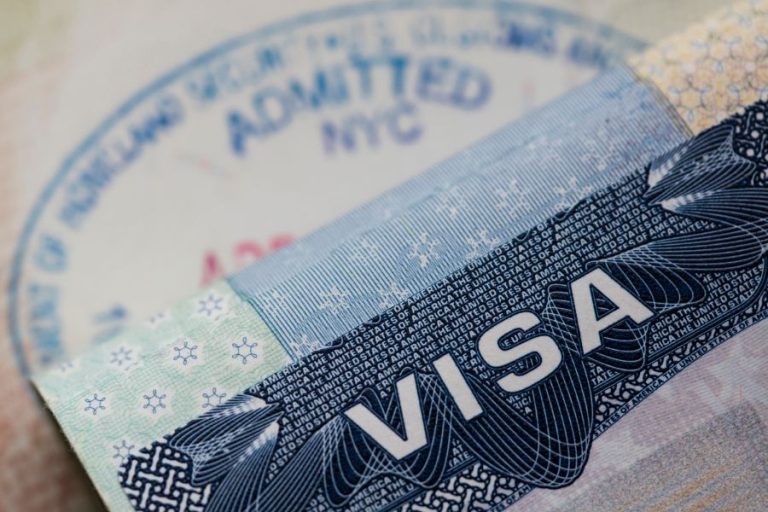Common Challenges in Employment-Based Immigration and How We Solve Them
Common challenges in employment-based immigration can include limited visa availability, extended processing times, and complex requirements that must be met. We can work through these roadblocks by proactive planning, understanding current visa processing periods, and timely communication and submission of required documents. It’s also vital that job specifications are aligned to visa criteria, and to keep an eye on policy and procedural updates. By thoroughly engaging with regulatory changes and monitoring legislative shifts, we’re more equipped to navigate these complexities together. If you stick with us, you’ll gain a better understanding of this ever-evolving landscape and how to successfully maneuver through it.
Understanding Employment-Based Immigration
Diving into the world of employment-based immigration, it’s important to understand a few fundamental concepts. As a bridge between talent and opportunity, employment-based immigration refers to the process where individuals secure visas to work in the U.S. based on job offers from U.S. employers.
Understanding visa categories is essential. Common types include the H-1B visa for skilled workers, the L-1 visa for intracompany transfers, and the EB-2 visa for professionals with advanced degrees. Each of these categories has its own set of job requirements and qualifications, which applicants must meet to gain employment-based green cards.
Employers play a significant role in this process, acting as sponsors for foreign workers seeking these employment-based visas. The labor certification process is a fundamental part of this. It’s a procedure where employers must demonstrate that there are insufficient qualified, willing, and available U.S. workers to fill the position being offered at the prevailing wage.
The world of employment-based immigration is complex, but understanding its core components, from labor needs to visa categories, can help navigate the process safely and confidently.
Exploring Visa Availability Issues
We now turn our attention to a pressing concern: visa availability issues. The immigration system’s annual quotas restrict the number of visas available each fiscal year, causing hurdles for workers keen to contribute to our economy.
Each visa category has a specific limit, leading to a high demand that often exceeds supply. This imbalance results in backlogs and processing delays, a challenging prospect for potential immigrants and employers alike. Understanding visa availability is paramount in planning and managing expectations.
Overcoming visa availability challenges is no small feat but it’s not impossible. It requires strategic timing and preparation. Employers must be aware of the visa availability in their workers’ categories and plan accordingly. Being proactive and informed about the immigration system can prevent unnecessary delays and disappointments.
Tackling Lengthy Processing Times
Let’s address the issue of prolonged processing durations, a barrier in the journey to employment-based immigration. This challenge is often caused by high application volumes, administrative backlogs, or changes in immigration policies.
To help reduce delays in processing, we’ve listed three key strategies:
- Understanding Current Processing Durations: By gaining insight into visa processing times for different categories, you can plan effectively and manage your expectations.
- Proactive Communication and Timely Submission: Regular interaction with immigration authorities and prompt submission of all required documents can help facilitate your employment-based visa application process.
- Seeking Professional Assistance: Expert guidance can streamline the process, ensuring all steps are correctly followed and potential pitfalls are avoided.

Decoding The Complicated Requirements
The citizenship and immigration services have set detailed requirements that must be fulfilled for a successful application. The first obstacle often involves aligning the applicant’s job qualifications, educational credentials, and experience with the specific visa category’s criteria.
As part of ensuring compliance, employers must accurately document and demonstrate the unavailability of qualified U.S. workers for the desired position. This is one of the common challenges in employment-based immigration. Crafting thorough, compelling cases that bridge the gap between job demands and applicant qualifications becomes essential.
However, with the limited number of visas available and the strict legislation, the process can be overwhelming for both skilled workers and employers. This is where professional guidance comes in. Expert consultants help navigate these complexities, shedding light on the confusing requirements. They provide a safety net in the application process, increasing the chances of success for both parties involved. By working together, we can turn employment-based immigration into a manageable task.
Streamlining the Visa Application Process
With a focus on simplifying the visa application process, we can make it more manageable. In the United States, understanding immigration law is essential to align labor market needs with the H-2A and H-2B visa categories. Strategic planning is necessary as delays can happen, affecting processing times profoundly.
To aid the process, employers must:
- Know the subtleties of visa categories.
- Have precise and thorough documentation.
- Match job requirements with candidates’ educational qualifications.
Responding to Requests for Evidence
Mastering the intricacies of responding to Requests for Evidence (RFEs) poses another hurdle in the visa application process. These requests seek additional evidence when the U.S. Citizenship and Immigration Services (USCIS) needs more information to make a decision. Failure to respond to these RFEs promptly can lead to delays, or worse, denial of your new visa application.
We’re here to help you navigate this often confusing aspect of immigration laws. An RFE doesn’t mean your application is rejected; instead, it’s an opportunity to provide the necessary clarity. Our role is to help you decipher what the USCIS is seeking and to provide a detailed, accurate response within the specified timeframe.
A well-crafted response can notably enhance your chances of success. We’ll guide you through the process, ensuring your response aligns with the current immigration policy and increases your chances of being part of the workforce next year. Responding to RFEs effectively is a pivotal step towards achieving your American dream.
Handling Employment Changes
Just as responding promptly and accurately to RFEs can improve your visa application’s success, understanding the implications of employment changes during the immigration process is equally significant. Maneuvering the current system, especially when alterations occur in your employment status, can be challenging.
It’s important to understand that certain visas, such as h-2b visas for agricultural and non-agricultural sectors, are tied to specific employers. This means that switching jobs during the immigration process may impact your visa status.
- Always consult with an immigration attorney before making any job changes. They can help you understand the legislation and the consequences of your decision.
- Proper documentation is vital. Always adhere to visa regulations when shifting between employers to avoid jeopardizing your American dream.
- Mental health is important. The stress of dealing with a demographic crisis and employment changes can be overwhelming. Seek professional help if needed.
It’s essential to present a compelling case for your purposes and professions when dealing with employment changes. Remember, we’re here to assist you in overcoming these challenges. Contact us today to schedule a consultation.
Staying Updated on Regulatory Changes
In the ever-changing terrain of immigration law, it’s our duty to stay on top of regulatory alterations. This guarantees we’re always prepared and equipped to inform our clients about modifications in visa requirements and processing procedures. Keeping abreast of policy shifts and procedural updates is not just vital, it’s a necessity to avoid unnecessary delays in the immigration process.
We understand that personal safety is key. Hence, we take proactive steps to engage with regulatory updates. This approach guarantees that we’re always ahead, successfully maneuvering through the immigration system.
We’re always looking out for potential legislation that would provide a more streamlined process or increased visa availability. Such laws need careful monitoring and understanding, to guarantee we can leverage them effectively for our clients. So, rely on us to provide you with up-to-date, clear, and concise information, ensuring you’re always in compliance with the current laws.







